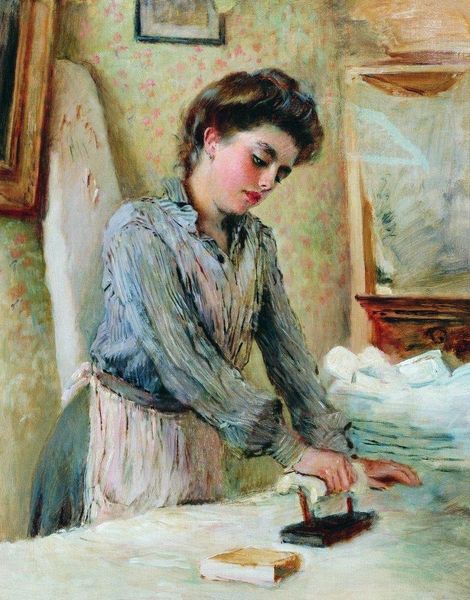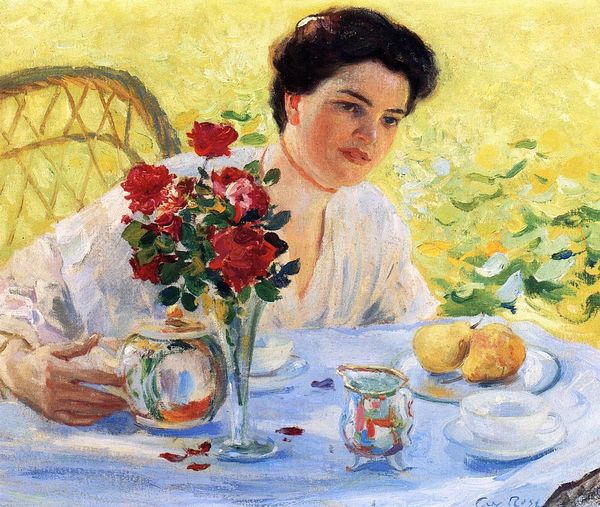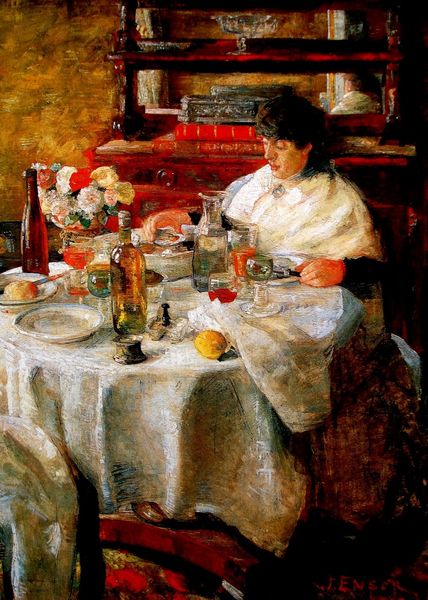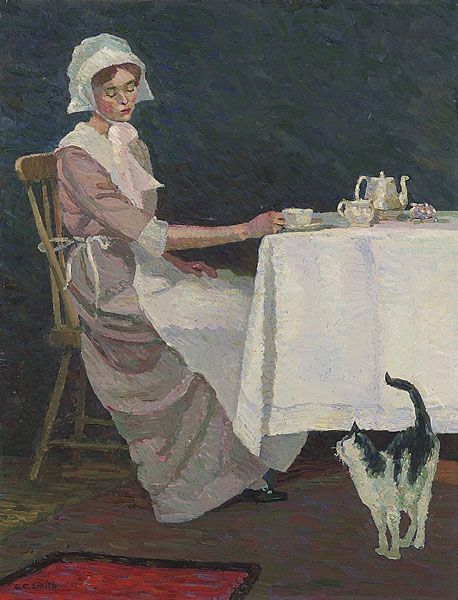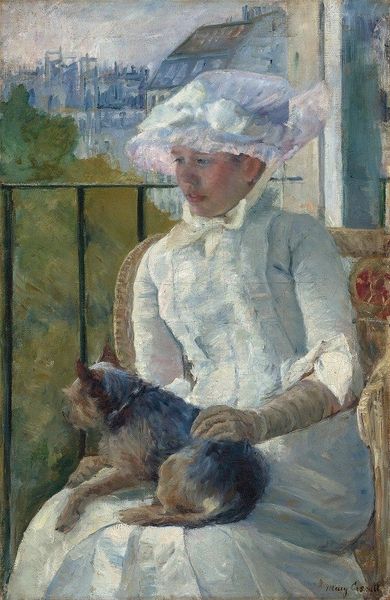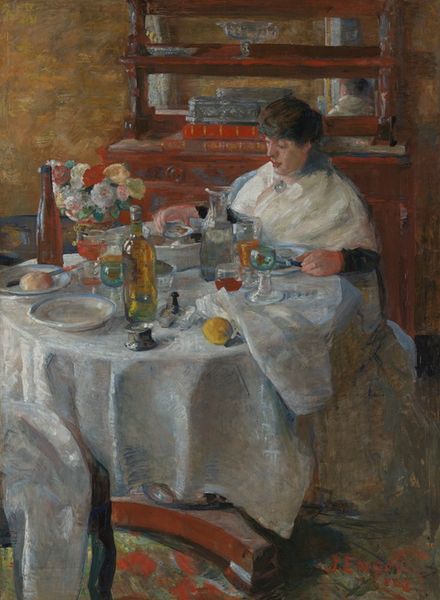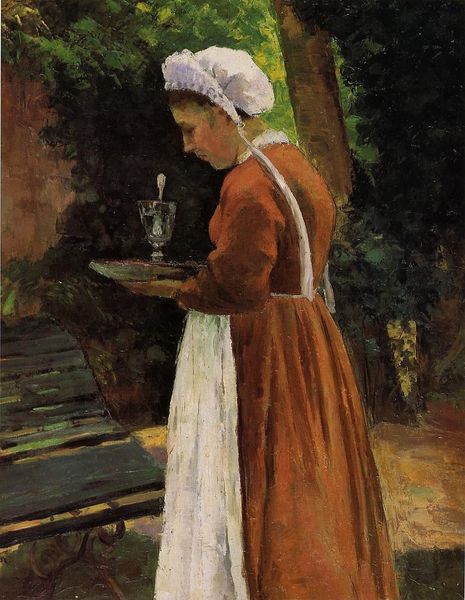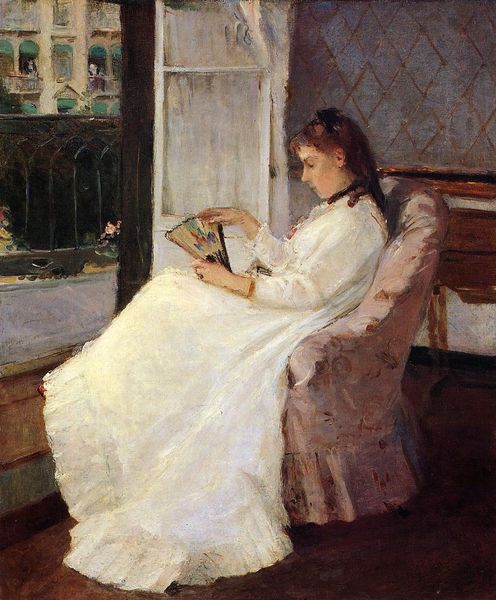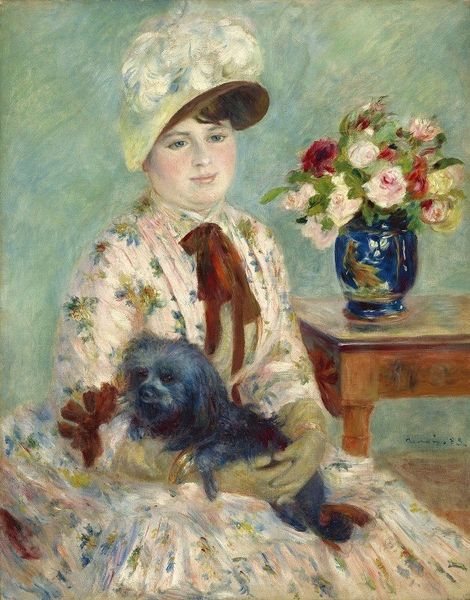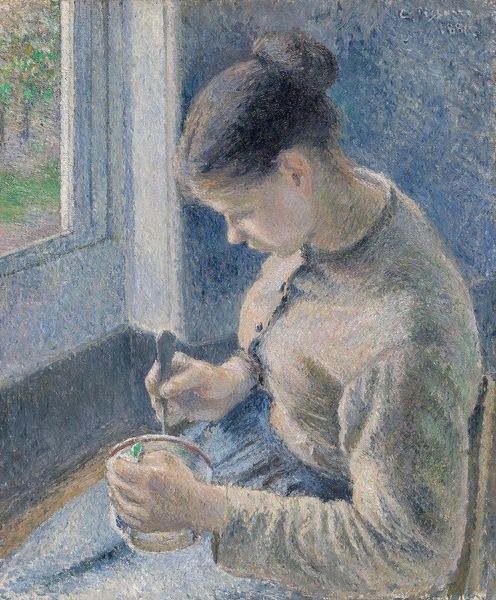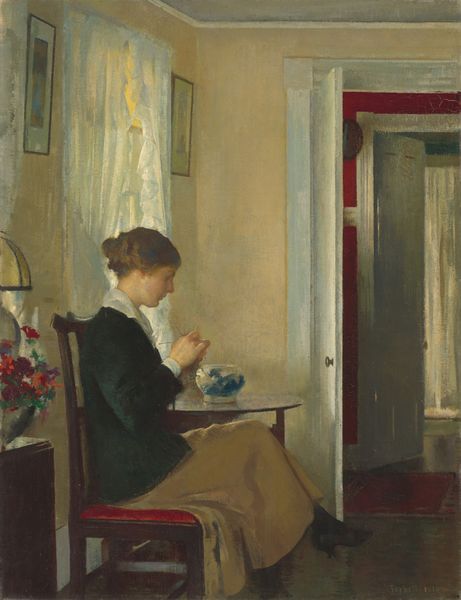
Copyright: Public domain
Lilla Cabot Perry painted “Lady at the Tea Table” in America, likely around the turn of the 20th century. This intimate scene depicts a woman sharing tea and biscuits with her dog, offering a glimpse into the domestic life of the American upper class. Perry, who studied and exhibited alongside the Impressionists, brings a distinctly American perspective to the genre. The loose brushwork and soft palette are hallmarks of Impressionism, but the subject matter reveals subtle social codes. Tea was not just a beverage, but a ritual, a performance of refinement and leisure. The dog, a pampered pet, further underscores the affluence and social standing of the woman. What can paintings such as this tell us? Art historians look at fashion, interior design, and even pet ownership to decode the values and norms of a specific time and place. They also examine how these images were exhibited and received, exploring the complex relationship between art, society, and the institutions that shape them.
Comments
No comments
Be the first to comment and join the conversation on the ultimate creative platform.
